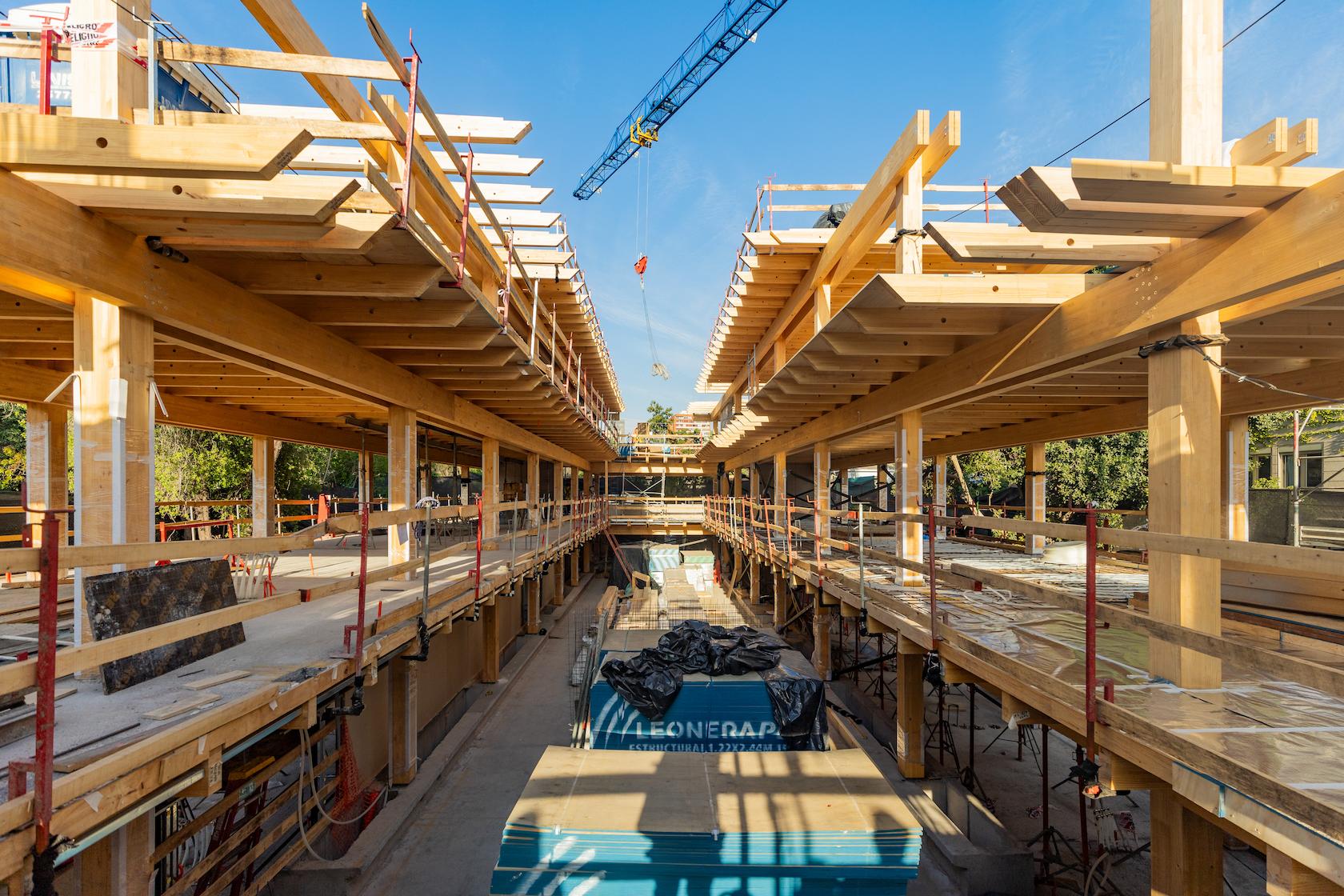ARAUCO participates in the development of the first carbon neutral facility in Latin America
Corporate- Burgos Net Zero is the name of the real estate, construction, and design team Taller Tecton project, which seeks to position itself as the first to be neutral in both carbon emissions and energy consumption.
- The wood used in the construction comes from Arauco’s forests.
In a complex scenario of climate change, in which Chile is highly vulnerable, there is a need to decarbonize the way we build our cities, an industry that accounts for about 40% of the world’s CO2 emissions. In this context, wood appears as the material to build a sustainable and environmentally friendly future. This material allows us to develop all types of projects with the same quality, strength and safety as reinforced concrete but with a reduced environmental impact, low carbon footprint, and lower externalities for the communities surrounding a construction site.
So explains ARAUCO’s Assistant Manager of Wood Construction, Fernando Marcone, who leads the team created to promote the use of wood in construction. The team’s efforts have focused on raising awareness of the benefits of wood as a construction material, supporting architects and engineers in developing their projects, and importing good practices in architecture, engineering, assembly, and logistics, aiming to promote industrialized wood construction in Chile.
Marcone says it has not been an easy task, but it has brought good results. During 2023, they were able to “woodize” several projects of this kind and helped in their development. Thus, the construction of the first carbon neutral building in Latin America was announced. It was developed with the support of the Hilam team and built with laminated wood, the raw material of which comes from the forests of the forestry company.
The Burgos Net Zero project is the first building in Latin America to be Net Zero Energy and Net Zero Carbon. This means that all the energy consumed by the building is supplied through a series of energy efficiency measures and on-site renewable generation. The latter, together with the incorporation of wood in the building, compensates for the CO2 emitted during its construction, making the building carbon neutral.
During their lifetime, trees capture carbon (C) from CO2 and return O2 to the atmosphere, thus cleaning the air. This carbon is retained and “trapped” in the wood, cellulose, or any derivative of the trees. In general terms, 50% of wood is retained carbon, so by incorporating wood in the construction of buildings we are keeping the main culprit of climate change in the structure of our buildings. This means that the carbon footprint per square meter built in wood is negative, which means that carbon is being removed from the atmosphere and helps to considerably reduce greenhouse gas emissions in the construction sector.
However, for this to be sustainable over time, the resource supply must also be sustainable, and this means responsible forest management, i.e., harvesting trees in their mature state and ending the cycle with reforestation.
Marcone points out that they are already working on and supplying wood for two more Taller Tecton buildings, which are also conceived with the same sustainable and quality urbanization vision, which, like Burgos Net Zero, considers the use of this renewable resource as its primary material. “Chile is a forestry power, and ARAUCO is one of the world’s leading forestry companies, so we undoubtedly have a key role to play in accelerating the transition of construction towards a more sustainable and quality construction.” He closes by saying he hopes that these buildings will demonstrate that it is economically feasible to build sustainably and that these examples will trigger diverse projects with the same vision of making a city.
Another benefit of building with wood and in an industrialized way is not only perceived by construction companies, real estate companies, or designers but also by the communities surrounding the construction sites since this way of building has a logic of assembling elements on site, thus making them less noisy. In addition, they generate less waste, require fewer trucks, and could even be designed for shorter construction periods. In this way, a formula is completed to obtain works with less impact on their immediate environment.
ARAUCO has been promoting wood construction for more than 20 years. A clear example of this is HILAM, a new business unit of the company dedicated to producing, developing, and marketing engineered wood-based products with the goal of making this trend a reality in our country and the region.




